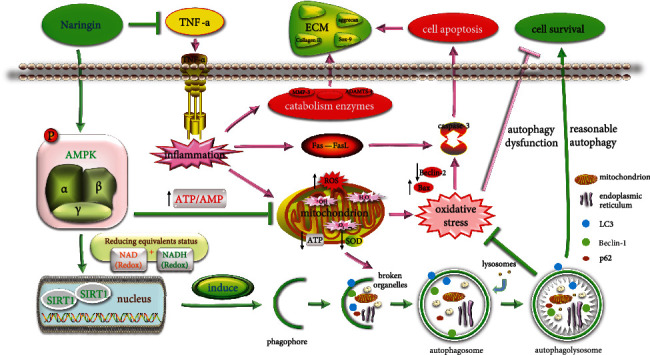Figure 10.

TNF-α is the key factor in IDD, which leads to human NP cell apoptosis in two ways: (1) TNF-α triggers inflammation and causes further oxidative stress in mitochondria, which gives rise to disordered metabolism and NP cell apoptosis. (2) TNF-α induces NP cell apoptosis through the death receptor pathway. The accumulation of apoptotic NP cells breaks the dynamic balance between the ECM destruction and synthesis via a malignant positive feedback loop, resulting in IDD and eventually LBP. Naringin, an autophagy inducer, regulates autophagy levels by activating AMPK and upregulating SIRT1 expression. This increase in autophagic flux inhibits the inflammatory cascade and ROS induced by TNF-α and phagocytizes useless organelles to provide more energy for NP cells. All of these events improve mitochondrial energy synthesis, decrease the expression of catabolic enzymes, and attenuate apoptosis of cells to effectively promote the formation of ECM to delay the process of IDD.
